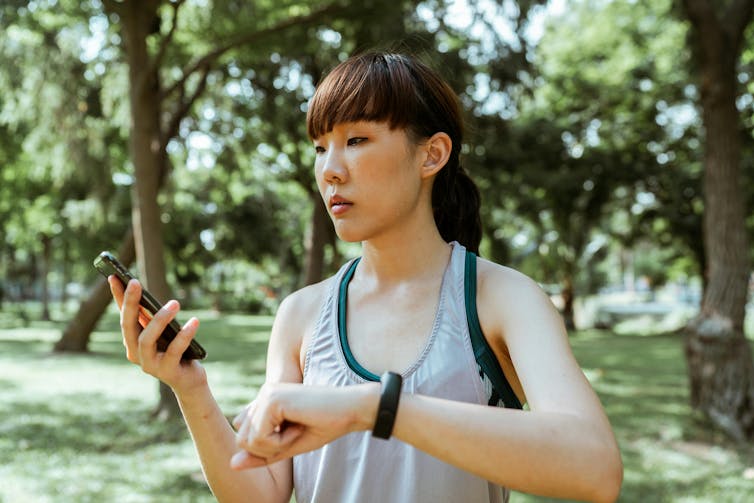The number of people working in modern slavery in Australia is increasing – up from 15,000 in 2018 to more than 40,000 in 2023.
These people pick, produce and process many of the products we consume, and work in service industries from construction and hospitality to illegal sex work and many other hidden areas of our economy.
On top of this, a large proportion of Australia’s imported consumer goods are sourced from locations and factories rife with modern slavery and human exploitation.
Globally, it’s estimated over 50 million people are currently experiencing modern slavery.
What is a modern slave?
Modern forms of slavery involve control and coercion.
People are forced to work under threatened or actual physical and/or mental abuse and may be trapped by debt or financial bondage.
Their freedom of movement and ability to speak up is severely restricted or removed. They are often dehumanised and traded as commodities, living without basic human rights.
Modern slavery preys on the most vulnerable in our local and global societies. Perhaps unsurprisingly, more than 70 per cent of the people trapped in conditions of slavery are women and girls.
Many of the vulnerabilities exposing people to the risk of modern slavery – like economic and social inequity, land dispossession and gendered discrimination – are exacerbated by the impacts of climate change.
For instance, the mass migration of people as seas rise, and the sudden inability to supply basic needs (like shelter, water and food) as a result of climate change-induced natural disasters (flood and fire), coupled with high population growth and the low cost of a human being on the global trafficking and slavery markets, is compounding the increase in vulnerable, disposable people.
Unfortunately, this forced labour of commodified people is integral to the cost efficiencies of many contemporary business models. Including some in Australia.
Consuming Modern Slavery in Australia
It may seem shocking in a modern, diverse Australian society that prides itself on being “one and free”, that Australian consumers are directly and indirectly complicit in the perpetuation of modern slavery – both in Australia and overseas – through consumption choices.
Consumers feed exploitation through their spending, typically prioritising factors – like price, convenience and social status – in their consumption choices.
In doing so, Australian consumers (consciously or not) create a demand for products and services that are produced by people who work under conditions of modern slavery.
In our recent study, we found that among a diverse range of consumers from across the country, Australian consumers are rarely aware or care about slavery being present in their consumption.
If they do care, they find it difficult to act accordingly.
What stops us from addressing modern slavery in supply chains?
While governments and non-governmental organisations (NGOs) are increasingly funding ‘awareness’ campaigns targeted at consumers, we found these campaigns do not change consumer behaviours.
Even once we’re aware, many of us still have to overcome internal barriers to:
- categorise people into either authentically being ‘a slave’ (or not)
- develop a sense of personal moral concern (or not)
- to dissipate a sense of personal responsibility or guilt.
If we look at these barriers in more detail, we can begin to see:
Categorisation: Slave or not slave?
The consumers in our study used a range of criteria and methods to categorise which people they believed were experiencing forms of modern slavery, and which were not.
For example, many used a ‘hierarchy of vulnerability’ to determine who they believed were enslaved and who was complicit and could leave if they wanted to.
In this hierarchy of vulnerability, children were universally categorised as victims of modern slavery.
“Children are the weak, they are ones who are the most vulnerable, physically, to defend themselves…Women and children [are] definitely the most vulnerable or the most attacked because of the power differential that occurs.” (Nick*, Brisbane QLD)
“When I think of an adult woman, I see that there’s a sex trade, but when I think of a child…I’m more okay with the idea of trading an adult for sex than a child for sex. That’s what it comes down to.” (Charles*, Melbourne VIC)
Confirmation of Slavery
The consumers in our study engaged in a final validation check to confirm if people were ‘really’ experiencing modern slavery.
The two key confirmation tactics used by the consumers were: creating empathy links to ‘walk in their shoes’ and visual confirmations – looking for visual cues like facial expressions, clothing, postures and the surrounding environment.
Legitimation and neutralisation techniques
Many consumers engage in legitimation techniques to normalise and legitimise the slavery they identify in their consumption.
This helps them to reduce the moral intensity, the degree to which an issue is felt to be morally significant, even if they recognise these forms of slavery are morally and legally unacceptable.
These consumers also engage in neutralisation tactics to dissipate any guilt and sense of moral obligation they might feel about consuming products and services that involve slavery.
These can include denying any responsibility, denying there is harm or injury by trivialising the experiences of slavery, and/or denying there is enough evidence to suggest conditions of slavery.
“I feel it’s not on my level to fix that problem. It’s a problem of capitalism or whatever… if I think about responsibility, I get really angry because I feel like it’s not mine because I’m just a person existing at the moment. I’m just working part-time, I’m just trying to exist.” (Eliza*, Regional VIC)
“I feel like if you’re not smart enough, not clever enough, too trusting, [then] somebody can definitely end up [in slavery]. [They should be] doing the proper adequate research to see what a job entails and if it is safe for them or not.” (Melinda*, Regional QLD)
“I think the slaves themselves are partly responsible.” (Jane*, Melbourne VIC)
“The women [sex slaves] want a better life, they want the luxuries…the majority of human trafficking is women because they make more out of doing that than what they would selling drugs.” (Amanda*, Melbourne VIC)
Even if as consumers we are motivated to act, there are significant external barriers that stop the mobilisation of consumer concern and moral responsibility.
These include social factors – not wanting to take an action that is not the social norm and a lack of a clear pathway to act – what can I actually do?
“I think unless it gets to my attention in some way, then I just don’t think about it. I know that’s my how brain works is, if you don’t see or don’t know about it, then it’s easier to forget about it than if you do know about it.” (Peter*, Adelaide SA)
“If you’re looking for coffee or a t-shirt, you just look for one of these logos, and you don’t have to do your deep dives. You don’t have to think about it because there is a guarantee that there’s no slavery involved and it’s fair… means that you don’t have to think.” (Phillipa*, Regional TAS)
Motivating and mobilising consumer action
It is vital to not only raise awareness but to create triggers for consumers to be able to link their own choices to the perpetuation of modern slavery.
We also call these triggers ‘moral shocks’- events that trigger a person to realise that their own actions could be contributing to harms that they personally find abhorrent. These moral shocks resonated with the consumers in our study and are often ‘turning points’.
Consumers then need to be able to identify clear pathways to positive action that they can take.
To give consumers a clear pathway, there needs to be clear and transparent labelling that consumers trust, availability of viable and appealing slavery-free products and services, and a sense of agency and purpose to mobilise ethical intentions and form new slavery-free consumption habits.
Consumers are also ‘citizens’ and they are not just restricted to ‘buy’ and ‘not buy’ decisions. They can also engage in other actions like petitioning and lobbying, which can have a powerful effect on how companies source and make their products.
And finally, recognising that the eradication of modern slavery will require a multi-stakeholder approach.
Rather than place all of the responsibility for positive change on the shoulders of the consumer, they are just one of a range of stakeholders – including governments as regulators, corporations and their extended supply chains and NGOs – who hold interlinked responsibilities and are all part of the solution.
*All participants have been given pseudonyms to protect their identity.








